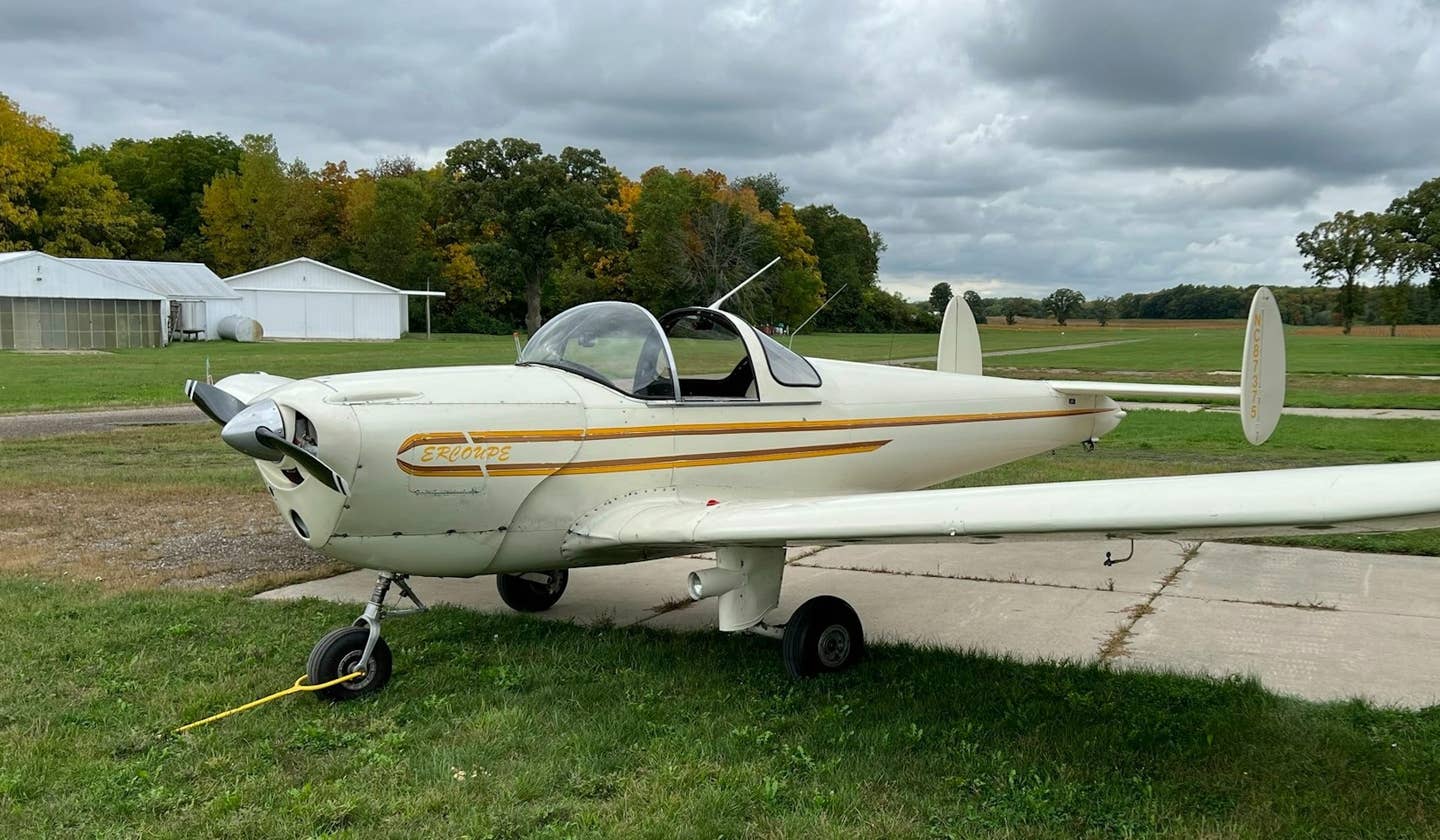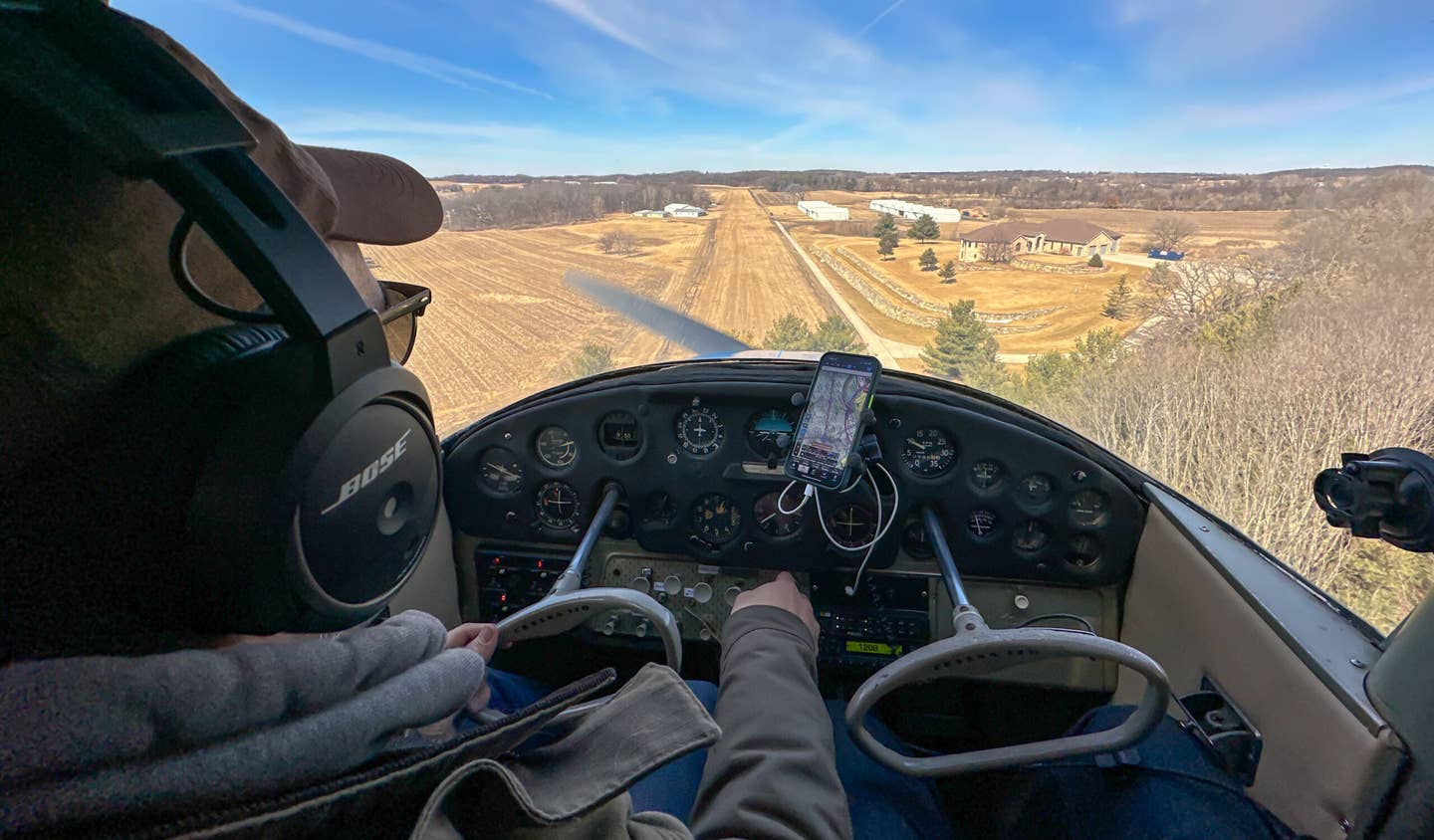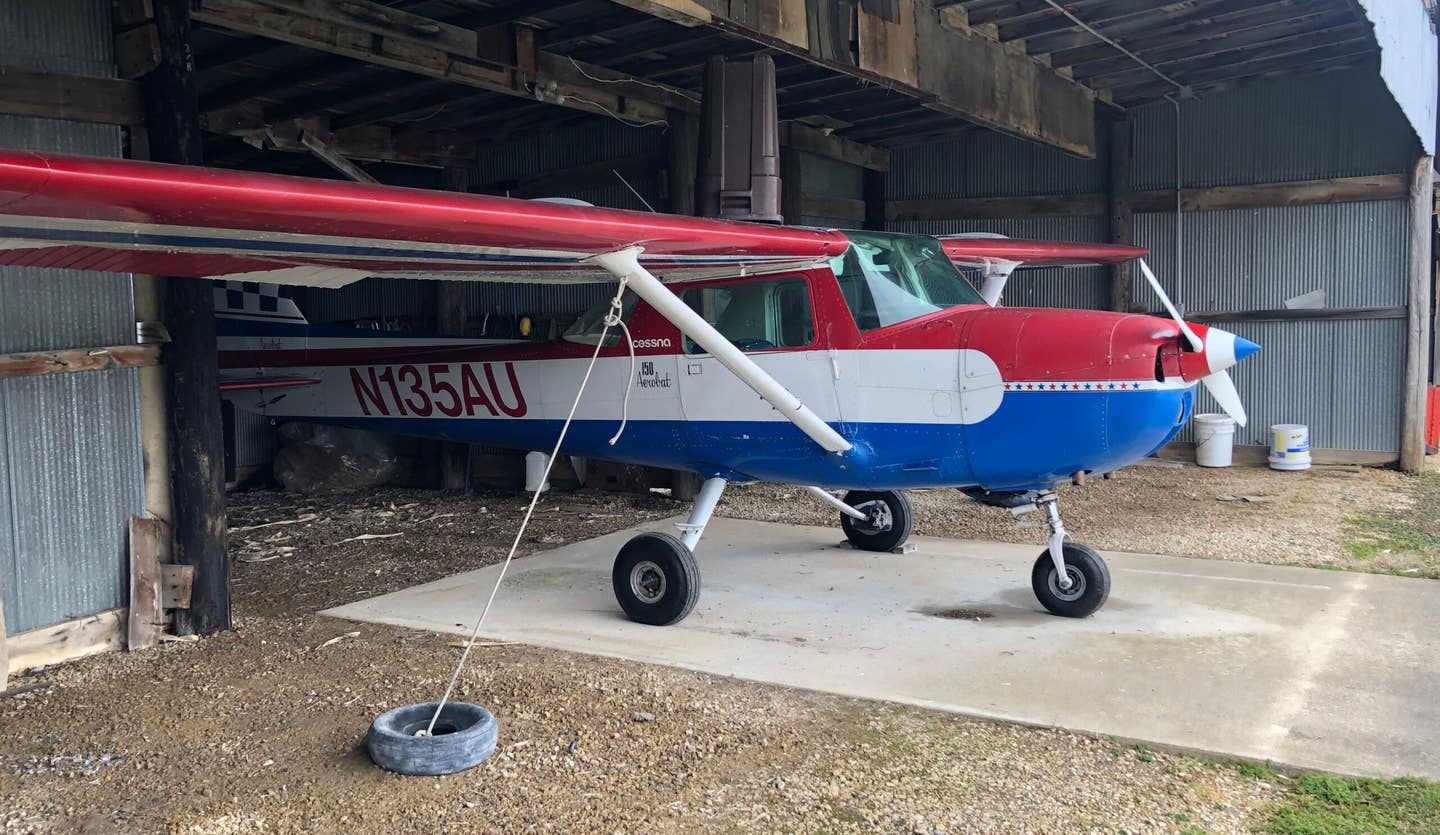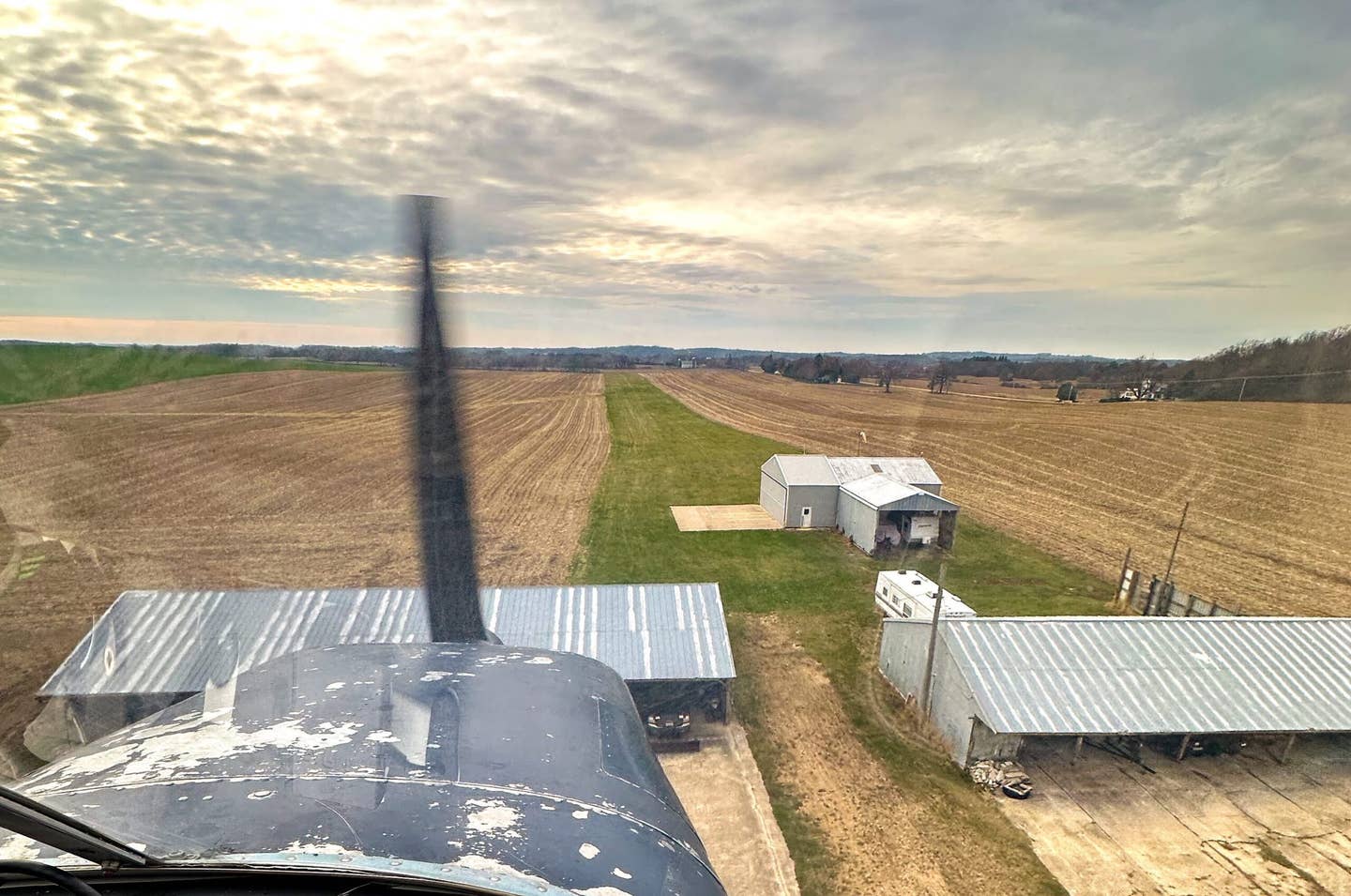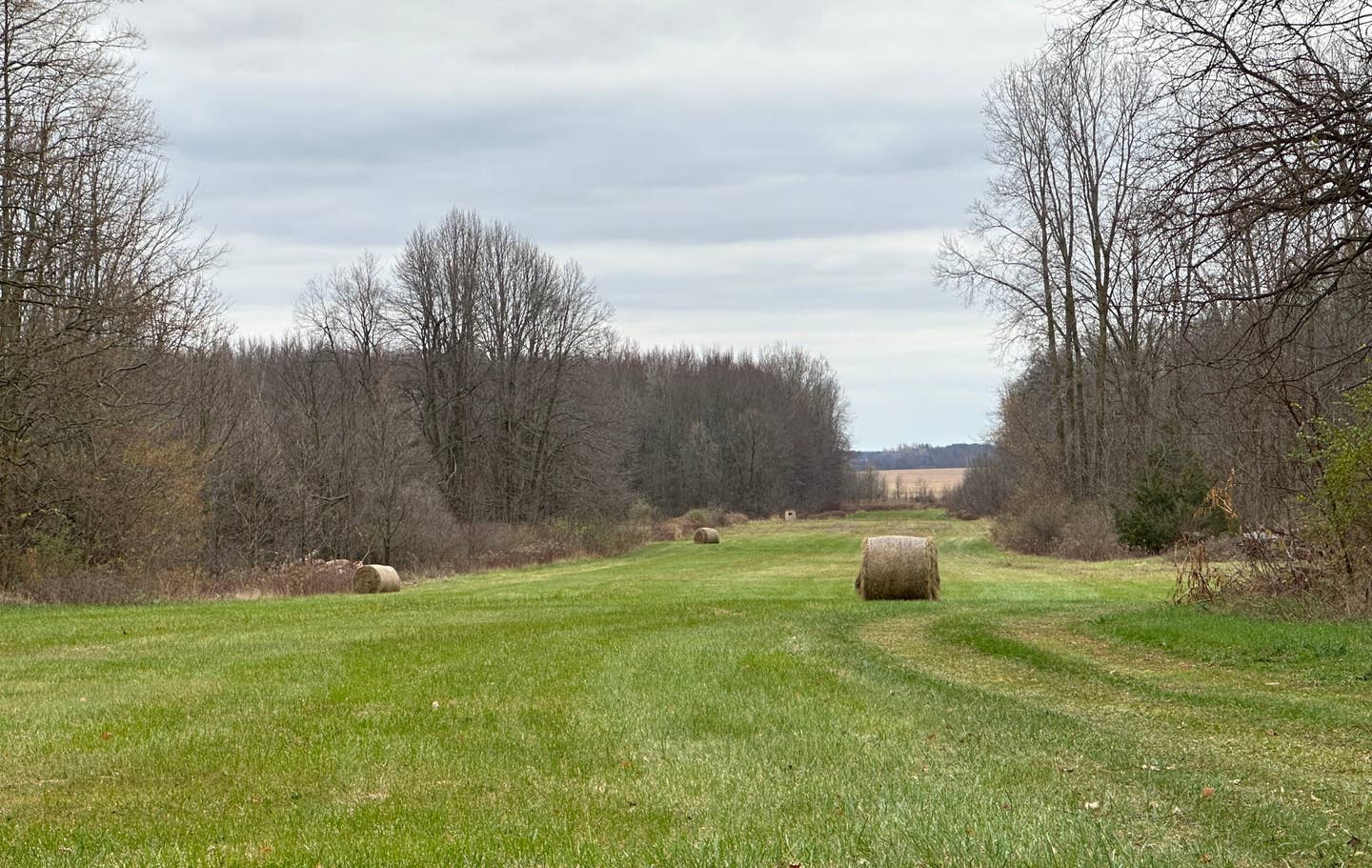Waiting on the First Annual Inspection Bill: A True White-Knuckle Experience
How many fun mods can be added to the list? It all depends on how much the prudent upgrades cost.
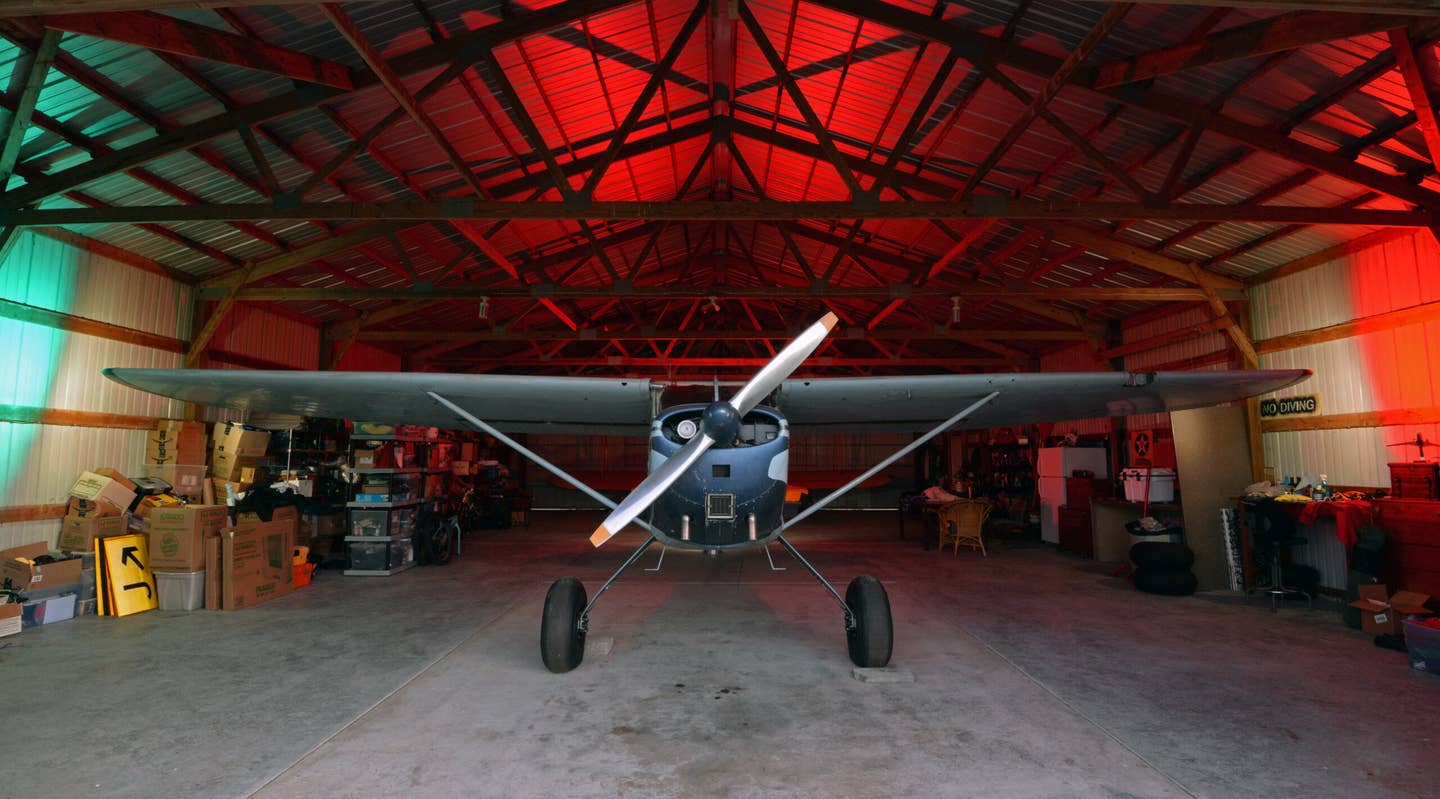
In addition to the annual, the 170 received several upgrades, including a full complement of LED lighting. [Photo: Jason McDowell]
Pilots are, for the most part, somewhat conditioned to control our fear. In times of acute stress, when their lives or the lives of others are on the line, we remain calm, fall to the level of our training, and execute the actions that must be accomplished. Rare is the event that makes our blood run cold and our mouth go dry.
A first-time owner’s very first annual inspection is an exception to that rule.
Faced with an unfamiliar airplane, neither the owner nor their mechanic are entirely sure what lurks beneath the skin. Every look into a cylinder, every glance into an inspection port, and every examination of a potentially worn part amounts to a pull of a slot machine lever. Except instead of the window display revealing how much money is incoming, it announces how much money is being spent. We pray to the gods of corrosion that three cherries don’t appear and drain our savings accounts. It’s enough to make even the most steely-eyed, battle-tested owner tremble.
I went into my annual inspection without ever even mentioning the subject of money or cost. Having worked previously with Ryan Johnson of Johnson Brothers Flying Service in Spring Green, Wisconsin, I knew he was both skilled and entirely trustworthy. We discussed the items I wanted to have addressed above and beyond the annual inspection itself. I encouraged him to simply fix what needed to be fixed, and I left a metaphorical blank check on his workbench.
Safety was, after all, my primary concern. If something big came up and needed to be addressed, address it I would. If that meant foregoing one of the fun modifications I had planned, so be it. If it meant selling my beloved Volkswagen GTI and buying a clapped-out Chevy Aveo, well, the priority was the airplane.
So it was with some trepidation that I anticipated Ryan’s phone call in the following days. When his name finally lit up on the screen, my heart rate intensified and visions of cherry trios clouded my vision. Obviously familiar with the neuroses of new owners, Ryan immediately put my mind at ease, saying right off the bat that everything went well. The one and only unforeseen issue was a broken tailwheel bracket, and at $55, that was about the best possible news I could have received.
Ryan and I chatted about the annual and how the installation of all the various modifications went. Nothing was particularly noteworthy, and were it not for all of those extras, the annual itself would have totaled $1,500 with parts and labor. It was an immense bargain and a huge stroke of good fortune.
The grand total, however, was much higher. As described in a previous article, I had purchased a small arsenal of modifications in the interest of making the airplane both safer and more fun. Later, as I examined the itemized invoice, it occurred to me that while prices for parts and modifications are easily found, it’s difficult to anticipate their total, installed cost. The hourly rates of mechanics vary from region to region. So too does the mechanic’s proficiency, and thus, the speed with which they can install such goodies.
Accordingly, owners are somewhat in the dark. We’re left to wonder exactly how much to budget for the acquisition and installation of a given part. Here, then, is a brief overview of the mods I had installed, and their itemized costs including installation:
Annual Inspection
| Oil | $55 |
| Filter | $30 |
| Tailwheel bracket | $55 |
| Labor (16 hours @ $85/hour) | $1,360 |
| Total | $1,500 |
This was the most pleasant surprise. I have regularly joked how, having spent his career as an actual rocket engineer, my airplane’s previous owner should have been able to properly care for a Cessna 170. As it turns out, he was indeed able to do so for the four decades he owned it.
Any annual inspection in which there is only one unforeseen issue is a win. And any annual in which said issue is a $55 part is a triumphant victory. It made me feel better about all the preventative maintenance and fun modifications I had included in the appointment.
Tailwheel Refresh
| New leaf springs | $320 |
| Labor (1.5 hours) | $128 |
| Total | $448 |
Because my existing tailwheel springs were decades old and correspondingly aged and fatigued, I considered this item to be money well spent. Gone is the fatigued metal that has endured so many cycles of flex over the years. In its place, fresh steel awaits. With any luck, the increased strength will be enough to absorb my hideous landings as I weave back and forth across the runway like an intoxicated giraffe.
Fuel/Oil System Refresh
| New wing fuel sump | $18 |
| New engine fuel sump | $22 |
| Six oil hose fittings | $98 |
| Oil hose (4 ft.) | $42 |
| One misc. fitting | $33 |
| Labor (1 hour) | $85 |
| Total | $298 |
This work was a direct result of a thread in the International Cessna 170 Association’s fantastic message board. There, owners far more experienced than I described dozens of issues every 170 owner should proactively address. This particular recommendation involved the replacement of copper oil lines that are routed through the firewall to the oil pressure gauge.
Apparently, these lines harden and become brittle with age and vibration. Eventually, it is said, the line will fracture at some point, creating a bad oil leak and potentially resulting in an engine failure. I had no clue how many hours Ryan would require to convert these lines to the modern style that resembles flexible hydraulic hose, but I had him go ahead with it out of an abundance of caution.
In addition to the oil lines, I also had him replace two of the fuel sumps that always seemed to weep fuel. Looking back, $300 was a bargain for the resulting peace of mind.
Install LED Exterior Lighting Package
| Full AeroLEDs lighting | $3,700 |
| 40 feet of wire | $67 |
| One breaker switch | $35 |
| One circuit breaker | $25 |
| Misc. hardware | $8 |
| Labor (8 hours) | $680 |
| Total | $4,515 |
One of the first items on my list of things to upgrade was the replacement of every incandescent bulb with a modern LED version. This motivation dates back to a flight in a Cessna 172 many years ago, in which a landing light switch began to smoke in flight. Flipping the switch to the off position burned a line into my fingertip. I high-tailed it back to the airport, and from about 8 miles away, I beat the fire trucks to the runway.
Then and there, I vowed to never own an airplane with high-draw, high-temperature incandescent exterior lights. Having a switch become that hot mere inches from a main fuel line was not something I ever wanted to experience again. Shortly after purchasing my airplane, I began chatting with AeroLEDs, and in a capacity separate from my work here at FLYING, they offered to provide a set of lights in exchange for a series of photos and honest reviews on a social media platform.
What I wasn’t sure about was the amount of time it would take Ryan to make the upgrade. Drop-in landing and taxi lights are one thing—you simply take the old bulbs out and bolt the new ones in. But as I learned, when a strobe function is added to each nav light, entirely new wiring must be run out to each wingtip and to the rudder. This, Ryan explained, was the single most time-consuming part of my annual inspection.
To be fair, I did upgrade every single exterior light including the beacon atop the vertical stabilizer. But now, my airplane lights up like the Griswold house on Christmas Eve, and is far less likely to burst into flames at any given moment. Even without the sponsorship, I chalk up the $4,500 cost as a wise one-time investment.
Install Garmin Dual USB Port
| Part | $359 |
| Labor (2 hours) | $170 |
| Total | $529 |
If there’s one thing I can’t stand in an airplane, it’s a squirrel’s nest of power cords strewn across my arms and legs. Headset cords are bad enough, but when you also have to contend with additional cords connecting your phone and tablet to power banks, well, that’s just unbearable. Faced with this distraction, I opted to have Ryan install a Garmin dual-USB power port.
The part wasn’t cheap at $359. But then again, I did opt for the dual type-C outlets in the hopes that my devices would charge quickly even while under a heavy load. When two hours of labor was added to that bill, the investment became even more significant. I felt good about going with Garmin, though, as they’re known for quality and reliability.
Like the LED exterior lighting, this is an upgrade you make once and only once. And now, the ability to simply plug my devices into the panel makes me wonder how I ever put up with that mess of cords running to my flight bag on the passenger seat.
Install Airframes Alaska Brakes/Wheels/Tires
| Wheel/brake kit | $1,950 |
| Wheel/brake STC | $290 |
| 26-inch Alaskan Bushwheels | $3,348 |
| Tire STC | $50 |
| Labor (3 hours) | $255 |
| Total | $5,893 |
Like the pieces of paper that differentiate certified parts from their experimental counterparts, this upgrade seemed entirely unnecessary and disgustingly expensive. I cannot begin to justify the cost. I’m not a bush pilot. My skill level certainly doesn’t warrant extreme off-airport gear. And basic direct replacements would have sufficed.
But I just couldn’t resist.
Perhaps poisoned by a steady stream of amazing photography showing big-tired machines bouncing their way across fields of cantaloupe-sized rocks, my vision of how a taildragger should look has been forever altered. Every time I glanced at my airplane, my gaze would inevitably fall to the existing, small tires, and I’d think about how wrong it looked.
I also considered the fact that my existing tires were due for replacement. So, too, were the brake pads and also the brake discs, which hadn’t been changed in more than 40 years. Simply buying direct replacements for all of these items was an option, but doing so would set me back almost $1,000.
Then I’d think back to the times I got to fly my friend Jim’s 170, shod with massive, 29-inch tundra tires. I’d think about how pillowy-soft they are, and how much fun they make every landing. So when I found a set of lightly used 26-inch tundra tires listed for sale locally, I decided to splurge.
Though the used tires only cost me about half of what a new set costs, I inserted the cost of new tires in the table above to provide an idea of what to expect for an entirely new setup. If your airplane has single-piston brakes like mine did, an upgrade to dual-piston brakes is necessary to maintain proper braking power with the larger tires.
Summary
In the end, my total expenditure for the annual inspection including all the mods came out to about $8,000. To break it down, $1,500 of that was the annual itself. About $2,200 of it was an assortment of wise preventative maintenance and intelligent upgrades. And the remaining $4,300 was the frivolous wheel, brake, and tire upgrade.
Ultimately, I’m happy. My airplane is safer and more fun to fly. I’ve got good peace of mind. And most of the items are one-time upgrades that should last for at least as long as I own the airplane.
Best of all, I now have an extremely competent, trustworthy mechanic who knows my airplane inside and out. Barring any unforeseen mechanical issues, future annuals should go even more quickly and smoothly. But despite that, I fully anticipate my blood to run cold when I see his name pop up on my screen.
Sorry, Ryan. It’s nothing personal. It’s just the neuroses of a new owner.

Sign-up for newsletters & special offers!
Get the latest FLYING stories & special offers delivered directly to your inbox

